Advertisement
REPORTER'S NOTEBOOK
What It's Like To Visit The Santiago A Mil International Theater Festival During The Chilean Uprising
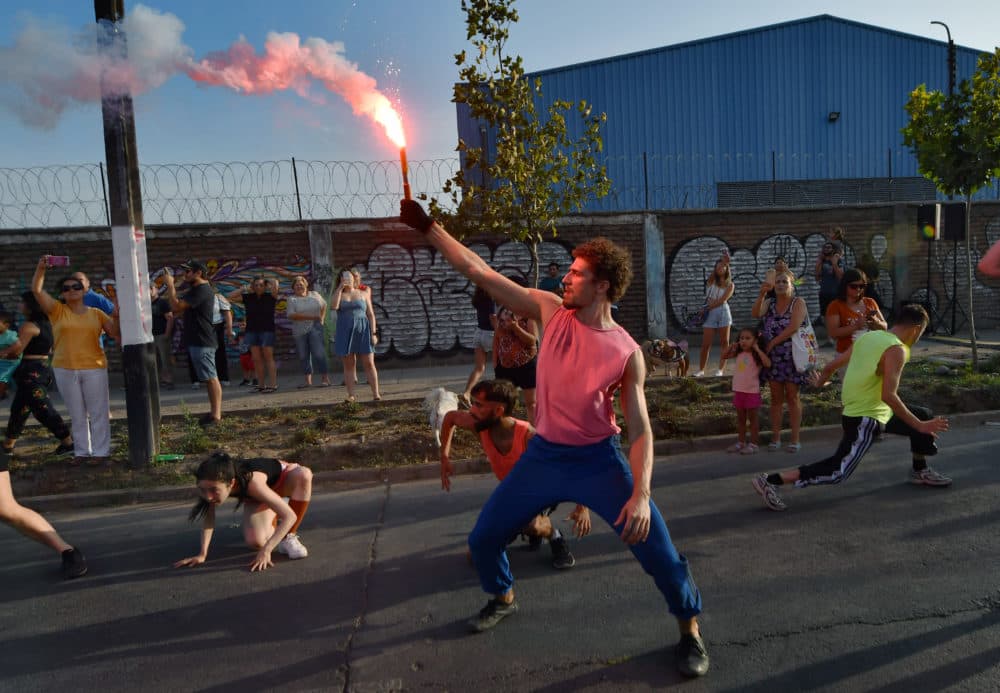
WBUR’s Amelia Mason was in Santiago, Chile, this month for the Santiago a Mil international theater festival. The festival is known as one of the preeminent presenters of contemporary Latin American theater and performing arts. Every year arts presenters from around the globe descend on the festival in search of new and exciting work, while theater companies hope the exposure will lead to opportunities to perform their plays abroad.
The trip coincides with ongoing social unrest that began in October when students initiated a protest of subway fare hikes. Huge demonstrations continue to take place in Santiago on a weekly basis as citizens express opposition to the country's vast wealth gap and privatized social services. In the background looms Chile's 17 years under the brutal dictatorship of Augusto Pinochet, whose free-market policies were enshrined with the aid of a national constitution that Chileans will vote to either keep or rewrite in a plebiscite in April.
Here are dispatches from Amelia's trip.
Thursday, Jan. 29
My final weekend in Santiago was packed with more interviews and as much theater as I could squeeze in. On Saturday, I went to see a play by the Brazilian company E Quem É Gosta? called “Isto É Um Negro?” or “Is This A Black?” — a bracing piece that explores the experience of being black in Brazil. The play was developed by a group of students at São Paulo University who wanted to turn the critical race theory they were reading in class into something more tangible. The end result is a confrontational play that is performed entirely in the nude — a concept that seemed a bit pretentious to me at first. But the cast won me over with a combination of self-possession, wit and charisma.
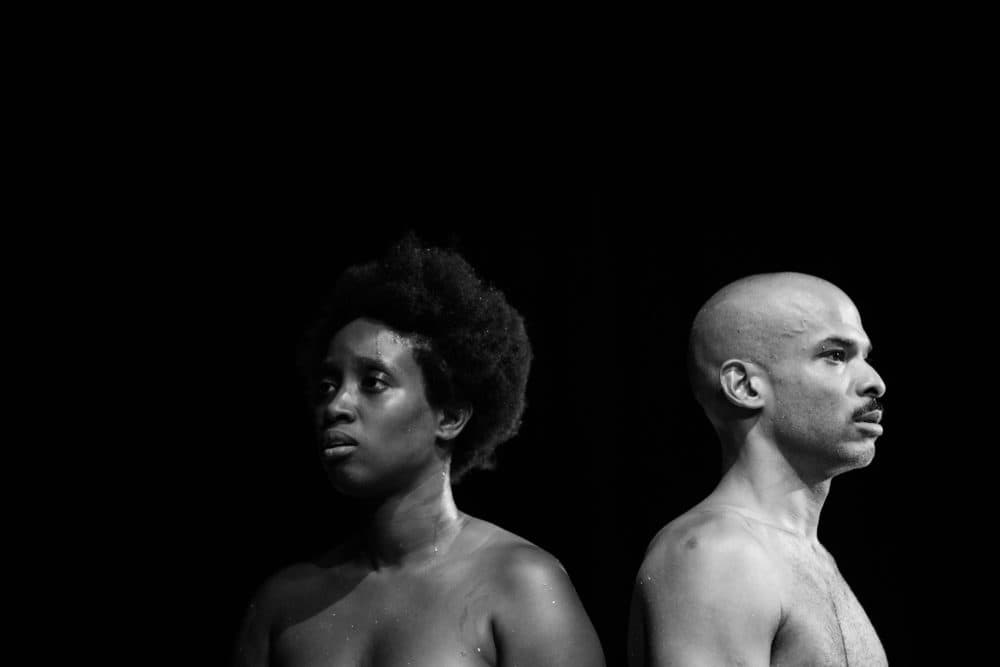
On Sunday I caught the final performance of “Love to Death,” a project from the Samoan New Zealand choreographer Lemi Ponifasio. It features two Chilean performers: Mapuche musician and composer Elisa Avendaño Curaqueo and contemporary flamenco dancer Natalia García-Huidobro. The piece deals explicitly with the injustices inflicted on the Mapuche, Chile’s largest indigenous group, by the Chilean state. (The government routinely tries Mapuche lands rights activists under a dictatorship-era anti-terrorism law, and high-profile killings of Mapuche by police have become an issue of public concern.) “Love to Death” contrasts Curaqueo’s stark, emotive singing with the aggressive percussion of García-Huidobro’s hard-soled shoes. Though the piece dragged in some places, it concluded with a tender, powerful denouement.
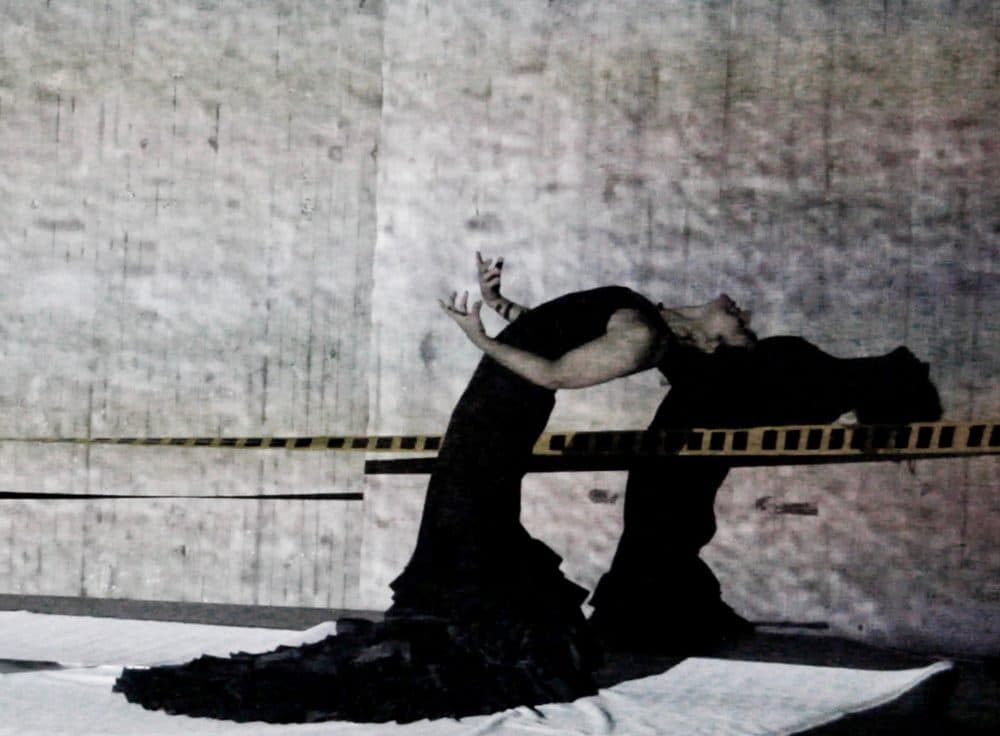
I wouldn’t be surprised to see either of these pieces presented in the United States. The broad strokes of “Isto É Um Negro?” will be familiar to American audiences, though I’m curious to see what nuances a better translation of the text yields. “Love to Death” will no doubt resonate as well. The 2018 killing of a Mapuche man named Camilo Catrillanca contains eerie parallels to the incidents that sparked the Black Lives Matter protests — Catrillanca was approached by police while he was riding his tractor home after a day of working in the fields and was shot to death when he tried to drive away. Pictures of Catrillanca are plastered all over the buildings in Santiago, as familiar to me now as the faces of Trayvon Martin and Michael Brown.
When I asked Calderón what distinguished American theater from Chilean theater, he said that theater in the States is defined by the family drama. “Every problem in [American] society is distilled through the complications of motherhood, fatherhood and trauma and abuse,” he said. But in Chile, “[the family drama is] not a part of our DNA.” Much of the work I saw at Santiago a Mil was political and/or conceptual. It was vast in scope, at times polemical. Yet the fixations of Chilean and other Latin American creators were familiar to me. The packaging was different, but it translated just the same.
Advertisement
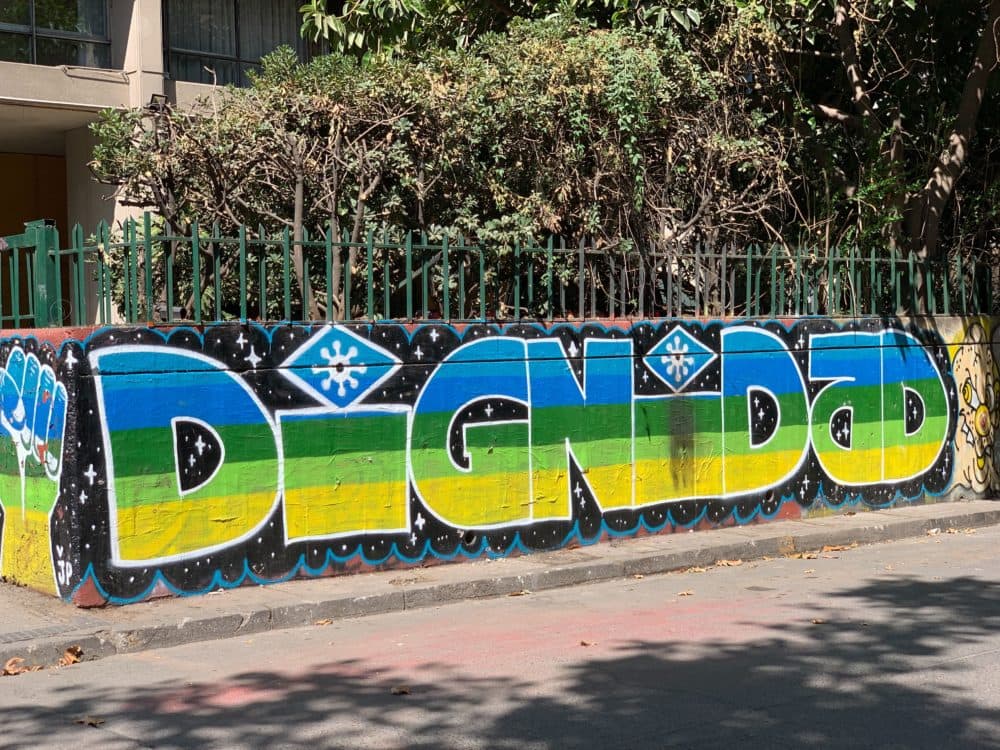
Saturday, Jan. 25
On Wednesday I traveled to the outskirts of Santiago and the scrappy theater space where the Chilean company Teatrocinema develops and performs its plays. I was there to check out its new piece, “Plata Quemada,” which comes to ArtsEmerson in Boston in March. I’ve really never seen anything quite like it. Teatrocinema employs projections and comic-style graphics with a cinematic flair that makes you feel like you’ve been dropped into a movie, your perspective swinging with the camera’s fluid movements. In one scene in “Plata Quemada,” a group of bank robbers contort themselves around a tabletop turned sideways, and suddenly you’re looking at the scene from above, a fly perched on the ceiling of the robbers’ den.
One of the company’s creators, Juan Carlos Zagal (who goes by Zagal, Madonna-style), told me the group’s cinematic technique is more nimble than conventional theater — for example, when a character enters a new scene, instead of exiting the stage she simply stands still while the world spins and reorients around her. At the same time, Zagal said, the method retains the immediacy that defines live theater: real bodies, sharing space with us.
On Thursday, I trekked (OK, Ubered) to the San Joaquín neighborhood of Santiago to check out a performance by the Chilean choreographer José Vidal. The piece, called “Emerger,” involved hundreds of dancers, the majority members of the public who had been invited to learn the choreography. Professional members of Vidal’s company led two exuberant packs of dancers through San Joaquín’s dusty streets, while neighbors watched, bemused, from their doorways and stray cats fled in alarm. A crowd gathered as the dancers met on a wide empty street and began a fluid give-and-take, merging and splintering, leaping and falling, before coming together in one big jubilant group.
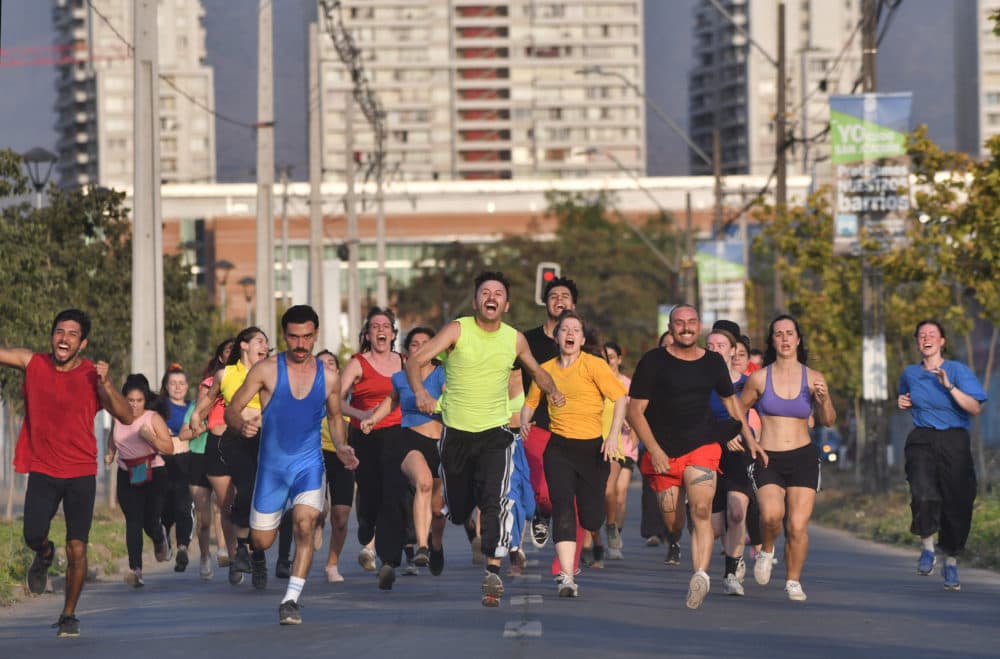
And on Friday, the protest. Since the uprising kicked off in October, protesters have demonstrated weekly in Plaza Baquedano, which has been informally re-christened Plaza de la Dignidad, or Dignity Plaza. The march started to the west of the plaza and proceeded up Bernardo O’Higgins Avenue. We — myself, a photographer and another journalist — linked up with a group protesting Chile’s privatized pension system, which is notoriously inadequate; pensioners typically collect only a few hundred dollars a month, well below minimum wage. As we walked east up the boulevard, protesters and police skirmished on the side streets. We covered our faces as the telltale sting of tear gas began to irritate our throats. Protesters wore gas masks and helmets and flung rocks at the police, who shot at them with water cannons mounted on tanks.
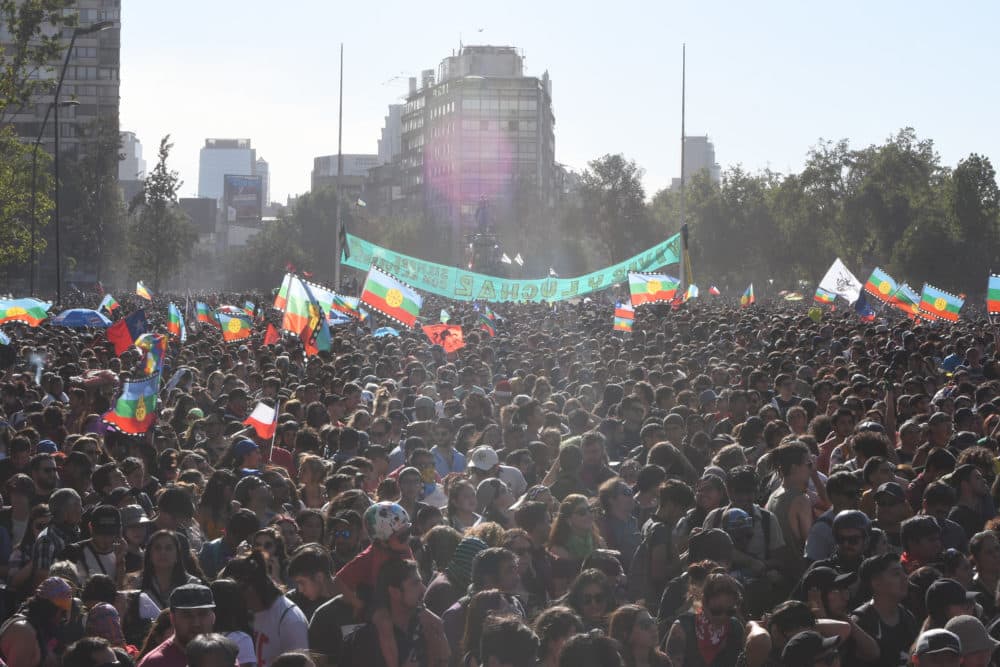
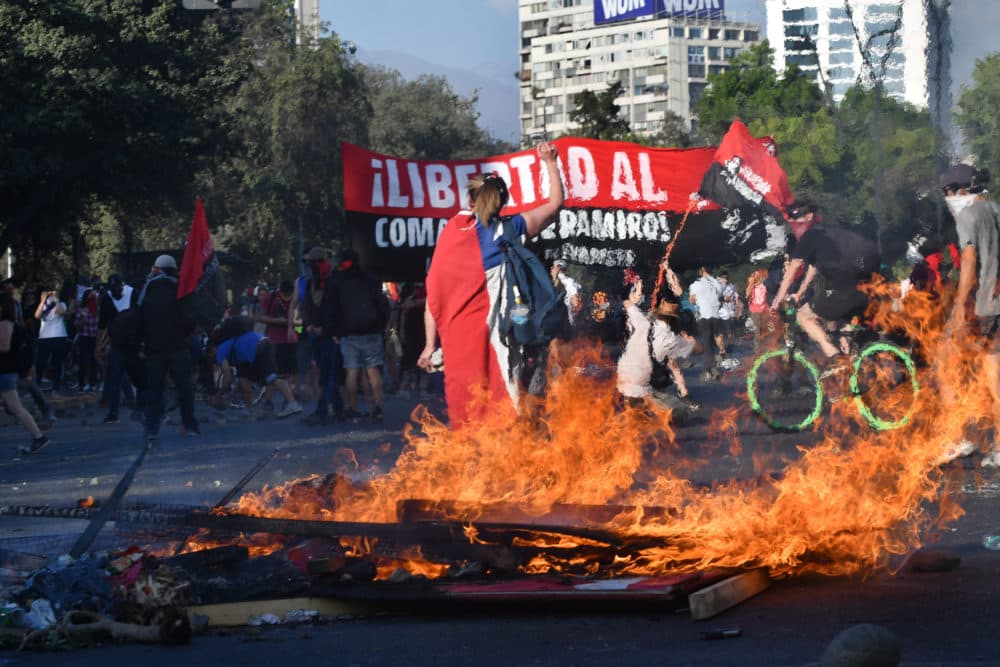
As we approached the plaza, the protest began to feel more like a party. The focal point of the square is a towering statue of Gen. Manuel Baquedano, who sits straight-backed on a horse and gazes regally down at the city. The general has been utterly transformed by graffiti and protest art; at the demonstration, people climbed the monument and festooned it with streamers and flags. We worked our way up a small hill toward the statue, where the crowd was thickest. From there, a vast sea of bodies spread in each direction, waving the flag of the Mapuche, Chile’s indigenous group, and yellow banners calling for the end of the pension system, and the Chilean national flag. A band launched into “Killing in the Name” by Rage Against the Machine, and the crowd sang along, while water cannons fired in the distance and the sun shone fiercely on Santiago.
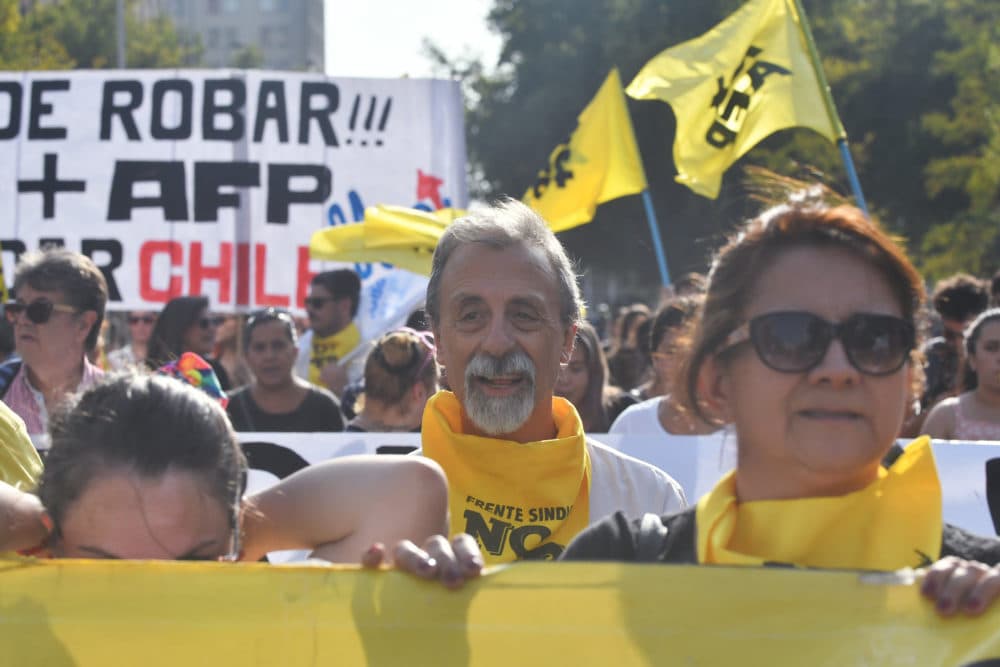
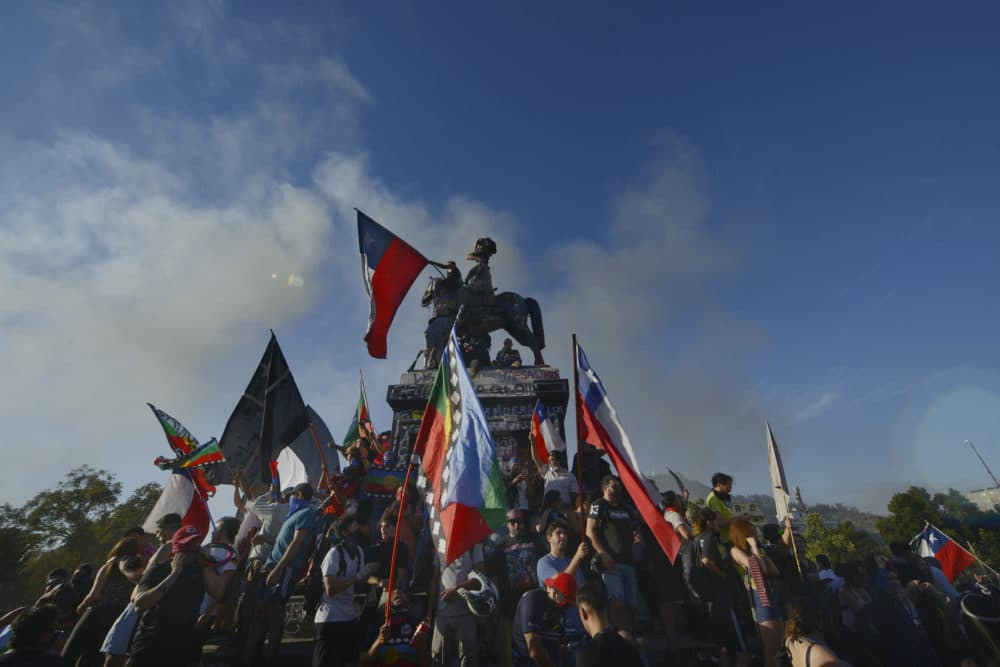
Friday, Jan. 24
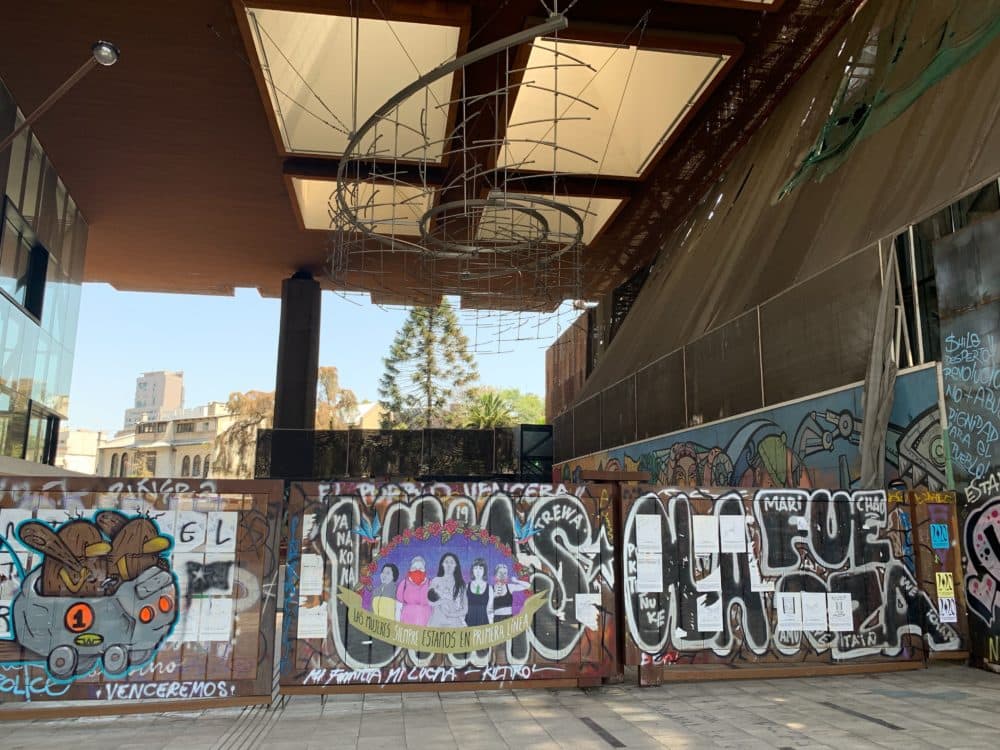
From my hotel room in Santiago’s financial district, the city looks like any other humming cosmopolitan hub, with tall glass skyscrapers, chic restaurants, banks and Starbucks. (They call it “Sanhattan.”) But there's more to Santiago than this; the city has something urgent to say. The festival’s main venue, the Gabriela Mistral Cultural Center, is blocks from Plaza Italia — popularly known as Plaza de la Dignidad — which was ground zero for the protests that erupted in October and continue weekly. There, the buildings are covered in graffiti, layers upon layers of discontent rendered in explosive color.
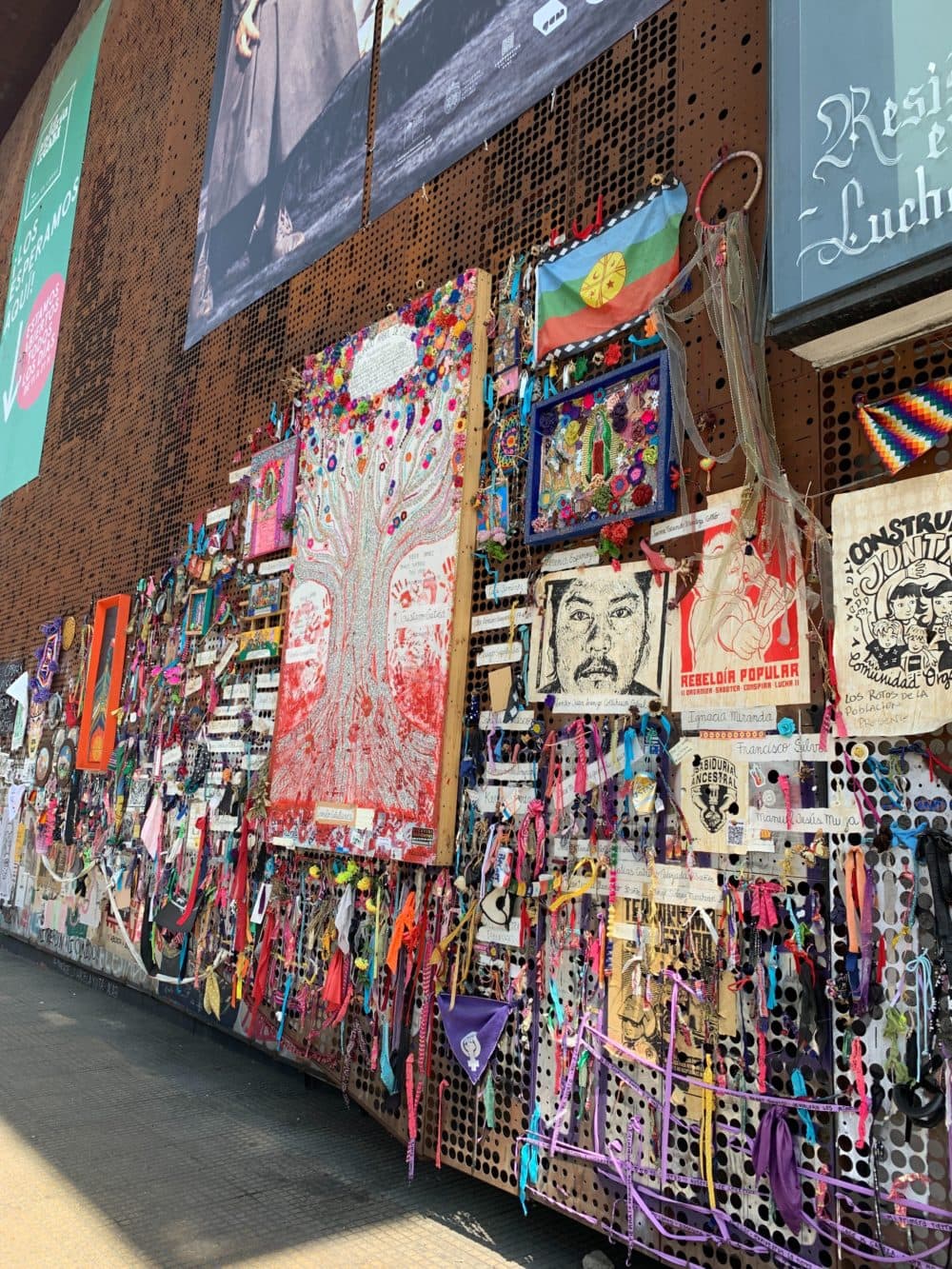
I arrived late Tuesday night, and the first thing I did Wednesday morning was speak with a young musician named Matías, who was heavily involved in the protests. He talked to me about the country’s vast wealth gap, the private pension funds that pay less than minimum wage, the rising cost of education. He described a deep distrust of government officials and the police — perhaps a hangover from Chile’s years under Pinochet’s military dictatorship, but just as much a result of the brutal tactics deployed by the police to disperse today’s protesters, who in turn throw rocks and destroy property. The front lines of the protests, Matías said, are like a war zone. Police have been known to aim rubber bullets at protesters’ faces, causing people to lose eyes. The eye has become a potent symbol of the uprising.
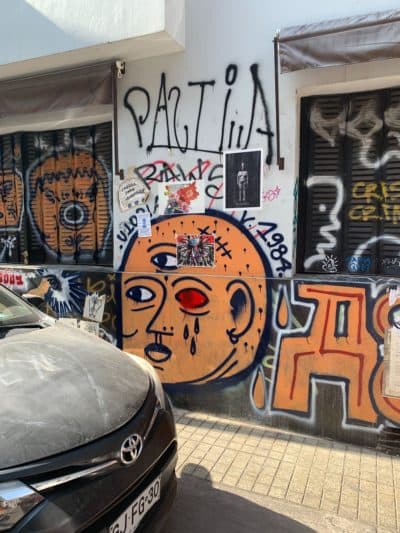
The movement is impossible to escape at the Santiago a Mil festival as well. On Wednesday, I saw Guillermo Calderón’s play “Dragón,” which ArtsEmerson is planning to present next year. The play centers around three artists who are trying to come up with their next performance piece, and it deals explicitly with issues of race and representation in theater. (I’m making it sound boring but it’s actually very sharp and funny and weird.) Calderón, who grew up during Pinochet’s regime, has always dealt with politics in his work, and he says he was criticized for his preoccupation with the traumas of the past. Now, of course, he is vindicated — but he finds himself doubting the utility of theater to address political issues. The characters in "Dragón" — artists — are portrayed as narcissistic and inept; they want to address politics in their work, but are hampered by ego and ignorance. Theater, Calderón told me, cannot react quickly enough to the present moment; it requires time to be written and developed. It can feel remote from the real world. Sometimes, you just need to be out in the streets.
This article was originally published on January 27, 2020.

